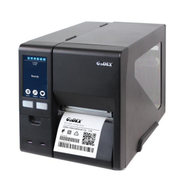Barcodes vs RFID: Which is Best for Your Business?
12th Aug 2025
TL;DRBarcodes are one-cost, easy to implement, ideal for small businesses and low-volume tracking. RFID offers real-time tracking, faster scanning, and automation, making it ideal for large-scale operations with complex inventory needs. Barcodes are affordable and widely available; RFID, on the other hand, requires a higher upfront investment but offers long-term efficiency gains. Barcodes are simple and integrate easily into existing systems; RFID, on the other hand, requires advanced infrastructure and setup. RFID offers higher security with encrypted signals, while barcodes can be easily duplicated. Upgrade to RFID when needing real-time inventory, automation, multiple tag scanning, or better decision-making based on accurate data. High-performance RFID printers for scaling up inventory management and automating operations. |
|---|
When it comes to tracking products, managing inventory, or streamlining business operations, two popular technologies come into play: barcodes and RFID. But which one is best for your business? The debate of barcodes vs RFID has been a topic of discussion for years, with each system offering unique advantages depending on the scale and complexity of your needs.
While barcodes have long been the go-to solution for many industries due to their simplicity and cost-effectiveness, RFID brings automation and efficiency to a new level with its ability to read tags without direct line-of-sight. Understanding the key differences, pros, and cons of each can help you make an informed decision about which technology will drive your business forward.
Let's break down the strengths and limitations of barcodes vs RFID so that you can choose the best solution for your operational goals.
How Do Barcodes and RFID Differ in Functionality and Use?
When it comes to barcodes vs RFID, both technologies offer robust solutions, but they operate in fundamentally different ways. Let's delve deeper into each of these technologies to gain a better understanding of how they function and their respective advantages.
What Are Barcodes and How Do They Work?
Barcodes are a visual representation of data encoded into a series of black lines and white spaces. They come in two main types: 1D (one-dimensional) and 2D (two-dimensional), with 1D barcodes being the more common type. Barcodes are typically printed on product labels and are scanned by a barcode reader.
The scanner uses a laser or LED light to read the pattern of bars and spaces, which is then converted into a numerical or alphanumeric code. This code is linked to the product information in your system, such as price, stock levels, and product details.
The main advantage of barcodes lies in their simplicity and low cost. Barcodes are inexpensive to print, and the scanners required to read them are affordable and user-friendly. However, barcodes vs RFID can become limited in scenarios where high volumes of products need to be tracked or when real-time tracking is essential, as barcodes require direct line-of-sight for scanning and can only be read one at a time.
What Is RFID and How Does It Operate?
Radio Frequency Identification (RFID) operates on a similar premise to barcodes, but with a key difference: it uses radio waves to transfer data between a tag and a reader, eliminating the need for a line-of-sight connection. RFID tags consist of a microchip that stores data and an antenna that transmits and receives signals.
There are two main types of RFID systems: active and passive. Active RFID tags have their own power source, allowing them to transmit signals over longer distances, while passive RFID tags rely on the energy emitted by the reader to activate them.
The primary advantage of RFID over barcodes is its ability to automatically track products without requiring direct line of sight. This means that you can scan multiple items at once, even if they are in a pile or a closed box, which significantly improves inventory management and streamlines processes.
While RFID technology tends to be more expensive than barcodes, especially in terms of tag costs and infrastructure setup, the benefits it offers—such as enhanced automation, faster processing, and reduced human error—make it a worthwhile investment for businesses looking to scale.
What Are the Key Differences Between Barcodes and RFID?
When comparing barcodes and RFID, it's essential to understand the fundamental differences in how these technologies operate and their suitability for various business needs. While both technologies help track products and manage inventory, they differ in several key areas.
|
Feature |
Barcodes |
RFID |
|---|---|---|
|
Data Transfer Method |
Optical scanning (requires line-of-sight) |
Radio waves (no line-of-sight required, can scan multiple tags at once) |
|
Data Storage |
Stores limited data (e.g., product ID or serial number) |
Stores more complex data (e.g., product details, location) |
|
Range and Coverage |
Short range, requires proximity and visibility |
More extended range, can read tags from a distance, even through barriers |
|
Cost |
Low-cost printing and scanning |
Higher cost due to tags, readers, and infrastructure |
|
Compatibility |
Highly compatible with existing systems |
Requires more advanced infrastructure and setup |
|
Ease of Implementation |
Easy to implement with minimal training and low investment |
Requires more upfront investment and setup time |
What Are the Advantages of Using Barcodes for Businesses?
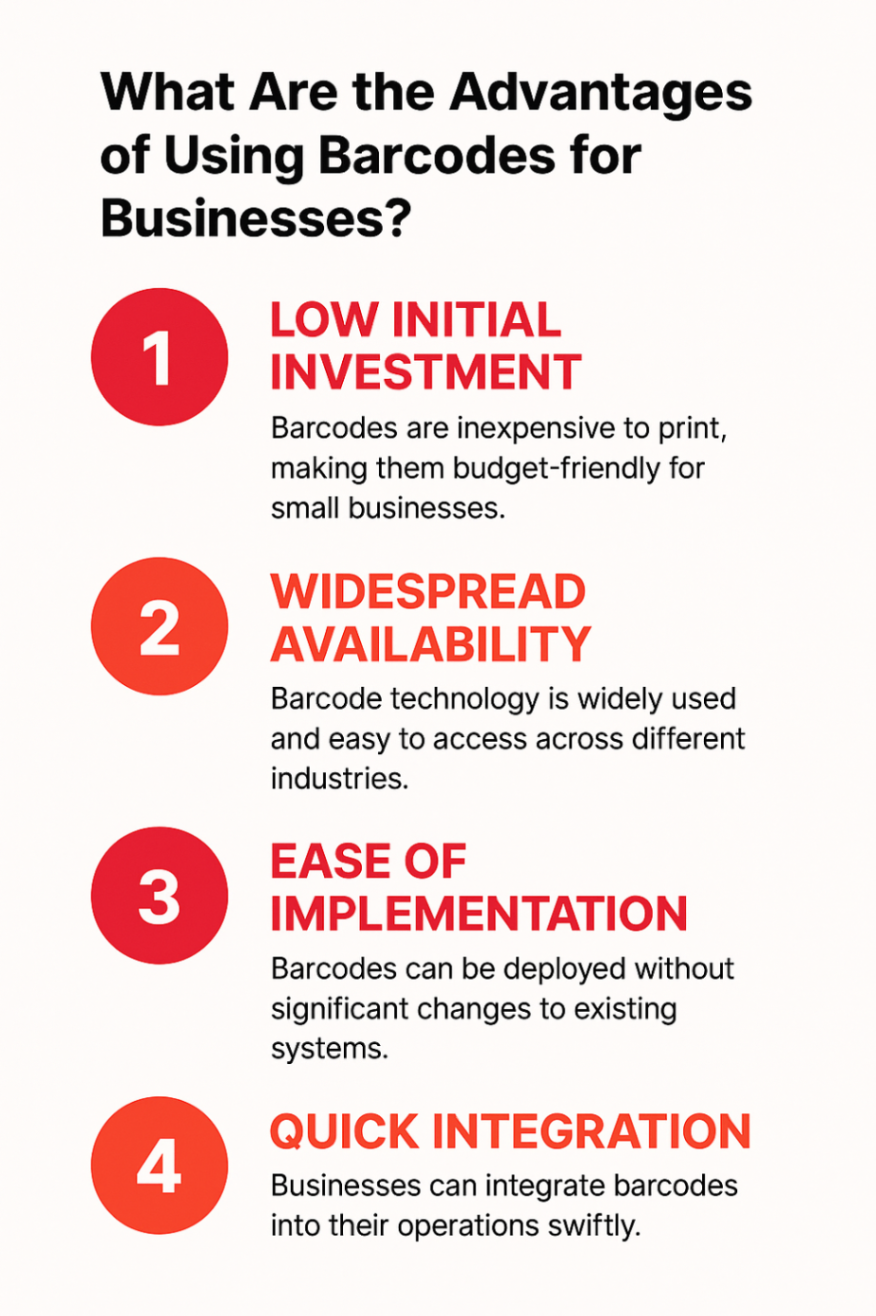
Despite the advantages of RFID, the choice between barcodes and RFID often comes down to cost, simplicity, and business requirements. Barcodes remain a popular choice for many businesses due to the following key benefits.
Why Are Barcodes Cost-Effective and Accessible for Small Businesses?
-
Low Initial Investment: Barcodes are highly cost-effective. Printing barcodes is cheap, and barcode scanners are affordable, making them accessible for businesses with limited budgets. RFID systems, in contrast, require a higher upfront investment for tags, readers, and infrastructure.
-
Widespread Availability: Barcode technology is widely available, and businesses can easily integrate barcode scanners into their existing systems without the need for specialized equipment. This makes barcodes a practical choice for companies that don't need the advanced features offered by RFID but still need a reliable product tracking solution.
How Do Barcodes Integrate with Existing Systems?
-
Ease of Implementation: Barcodes are easy to implement and don't require significant changes to existing systems. Most point-of-sale (POS) systems, inventory management software, and logistics platforms are already compatible with barcode technology.
-
Quick Integration: Businesses can integrate barcode scanning into their daily operations. The technology is straightforward, and employees can be trained in a short period, ensuring minimal disruption to workflows.
What Are The Advantages of Using RFID for Businesses?
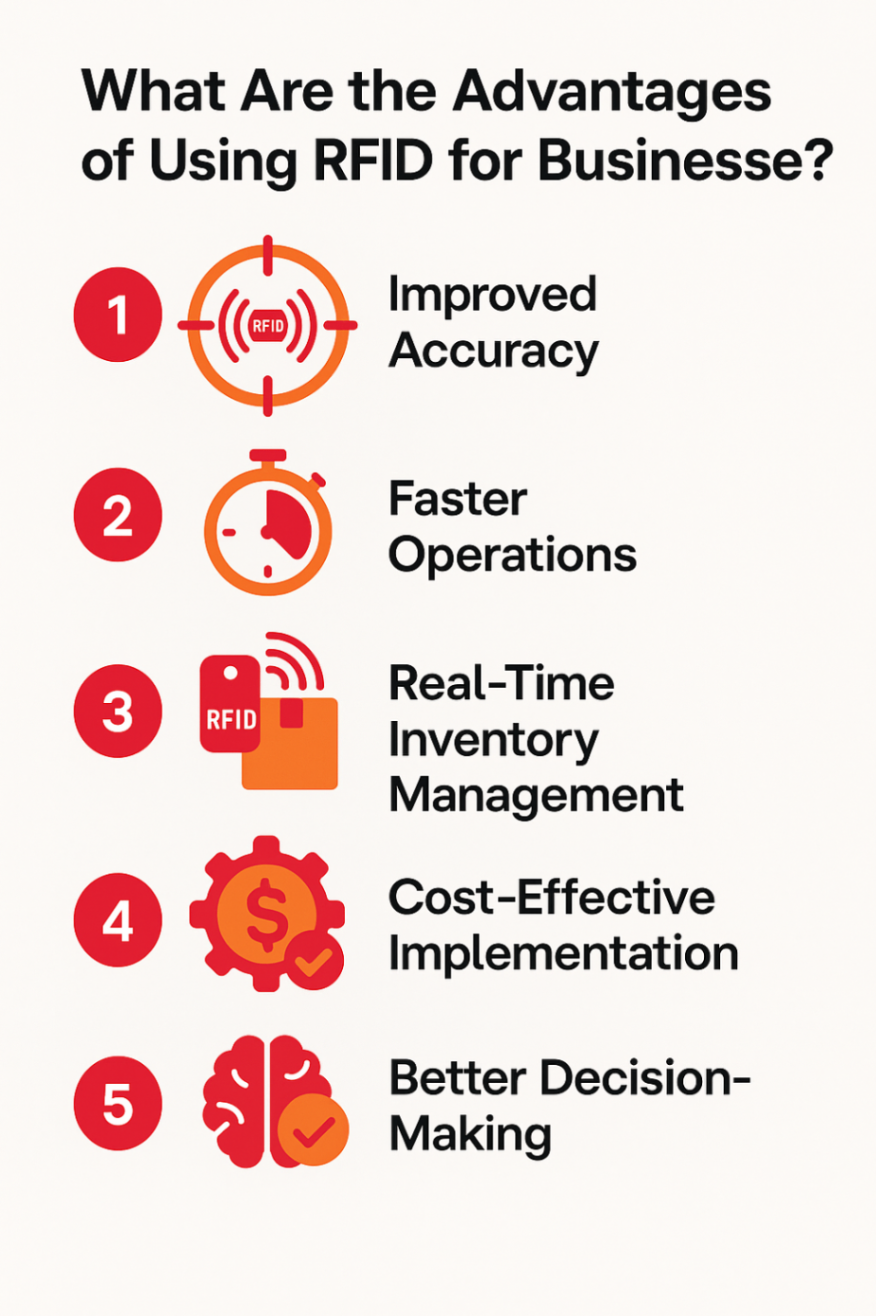
While barcodes vs RFID provides valuable comparisons, RFID stands out in various areas due to its advanced capabilities and long-term benefits. Below are some key advantages of using RFID for businesses:
1. Improved Accuracy
One of the most significant benefits of RFID technology is its improved accuracy. Traditional barcodes can be prone to human error, especially when items are mis-scanned, damaged, or misplaced. RFID, on the other hand, offers automatic data collection without requiring direct line of sight.
2. Faster Operations
RFID significantly enhances operational speed, particularly in environments with high product volumes. Unlike barcodes, which require each item to be scanned individually and within proximity, RFID tags can be read simultaneously from a distance, allowing for faster scanning of multiple items at once.
3. Real-Time Inventory Management
RFID enables businesses to manage inventory in real-time, providing up-to-the-minute insights into stock levels and product locations. This is a crucial advantage over barcode systems, which often require manual updates or batch scanning. With RFID, businesses can automate inventory tracking and gain continuous visibility, ensuring that products are always in stock and properly located.
4. Cost-Effective Implementation
Although RFID systems typically involve a higher initial investment in terms of tags, readers, and infrastructure, they can be cost-effective in the long run. By automating inventory management, RFID eliminates the need for manual stocktakes, reduces human errors, and lowers labor costs associated with traditional barcode scanning.
5. Better Decision-Making
With RFID, businesses gain valuable data-driven insights that support better decision-making. Real-time tracking and accurate inventory data provide a deeper understanding of product movement, stock levels, and customer preferences. This information enables businesses to optimize their supply chains, plan demand forecasting more effectively, and make data-driven decisions about stocking, procurement, and sales strategies.
What Are the Limitations and Challenges of Barcodes and RFID?
While both barcodes and RFID offer significant benefits, each technology also has its own set of limitations and challenges. Understanding these drawbacks is crucial for businesses when deciding which solution best fits their needs. Below, we explore the common challenges associated with both barcodes and RFID.
What Are the Common Drawbacks of Barcodes?
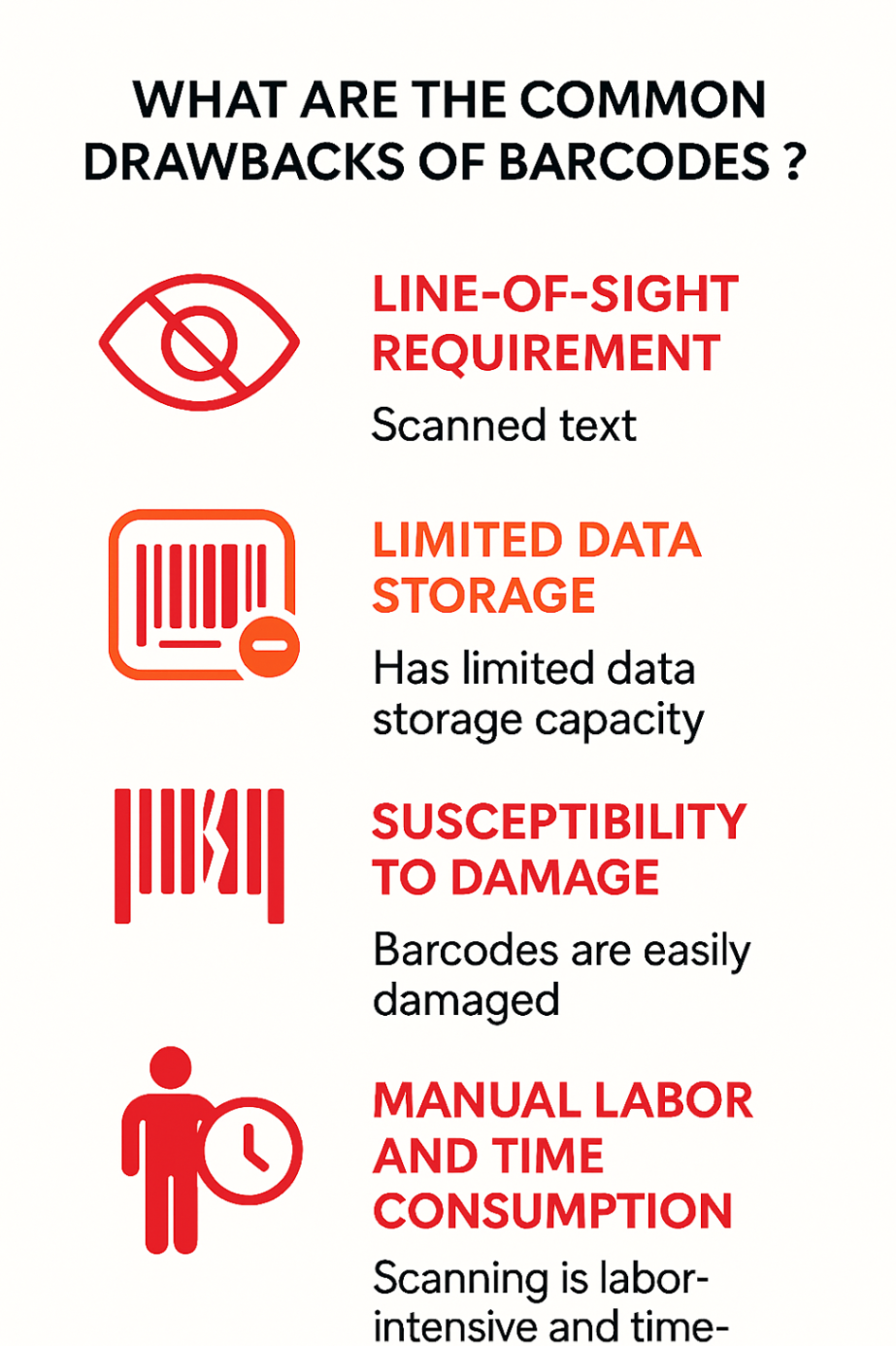
Although barcodes are widely used and cost-effective, they come with certain limitations that may hinder efficiency in some scenarios.
-
Line-of-Sight Requirement
One of the most significant limitations of barcodes is the need for direct line-of-sight. The barcode must be visible to the scanner, which can slow down operations, especially in environments where items are stacked, stored in boxes, or not easily accessible. This requirement can be cumbersome in high-volume, fast-paced operations. -
Limited Data Storage
Barcodes can only store a small amount of information, typically just a product identifier (e.g., a UPC). This makes barcodes less suitable for applications that require more detailed product information or complex tracking, such as in supply chain management or product history tracking. -
Susceptibility to Damage
Barcodes, especially printed labels, are prone to damage from physical wear and tear, exposure to moisture, or environmental factors. If a barcode becomes smudged, torn, or faded, it may become unreadable, leading to delays and errors during scanning. This issue can be particularly problematic in industries where products are handled frequently or exposed to harsh conditions. -
Manual Labor and Time Consumption
Barcodes require manual scanning of each item individually. In large-scale operations, this can become time-consuming and labor-intensive. While barcode scanning is quick, it still lacks the automation and speed advantages offered by RFID, which can simultaneously scan multiple items.
What Are the Potential Issues with RFID Implementation?
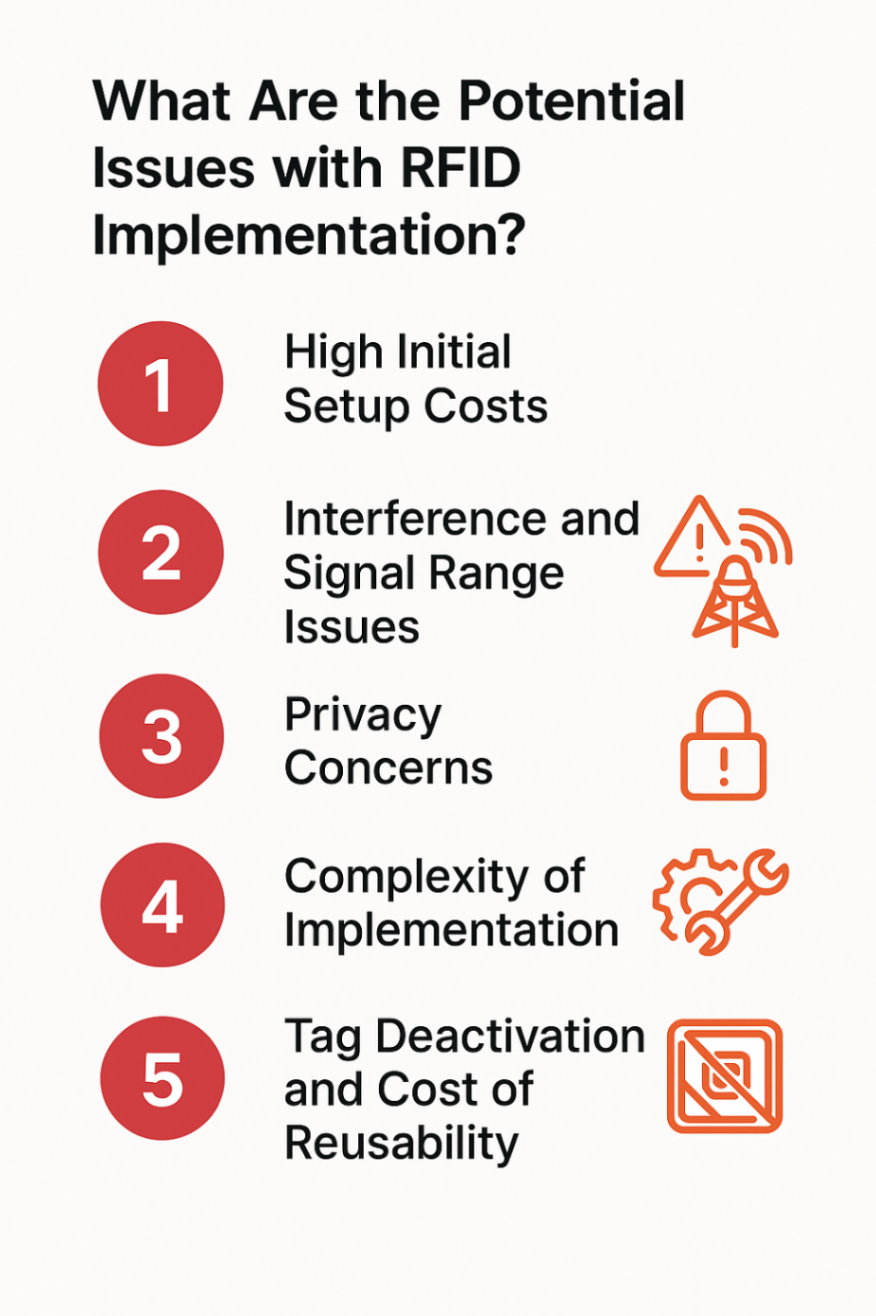
RFID offers numerous advantages, but its implementation also presents its own set of challenges and limitations.
-
High Initial Setup Costs
One of the primary drawbacks of RFID is its high initial investment. The cost of RFID tags, readers, and the infrastructure required to support RFID systems can be substantial. For small businesses or those with limited budgets, the cost of deploying an RFID solution may not be justified unless the scale of operations warrants the investment. -
Interference and Signal Range Issues
RFID systems can face issues with interference, especially in environments with metal or liquid. Materials like metal and water can absorb or reflect radio waves, resulting in reduced read ranges or difficulty reading RFID tags. This can be particularly challenging in industries such as food and beverage, logistics, or manufacturing, where items are often stored in metal containers or on metal shelving units. -
Privacy Concerns
Since RFID tags can be read without direct contact, concerns have arisen regarding the security and privacy of the information they contain. In specific industries, RFID tags can be used to track individuals or products without their knowledge or consent, raising concerns related to data protection and privacy regulations. -
Complexity of Implementation
Implementing an RFID system is more complex than a barcode system. It requires specialized hardware, software, and integration with existing systems. Additionally, businesses need to train their staff to handle the technology, which may require a longer implementation time compared to the simple installation of barcode scanning systems. -
Tag Deactivation and Cost of Reusability
While RFID tags can be reused, not all tags are designed for reuse. The cost of RFID tags adds up quickly, particularly if they are not reusable or are discarded after each use. Furthermore, RFID tags must be deactivated or removed to prevent unauthorized scanning, which could introduce additional logistical challenges.
How Do You Choose the Right Solution for Your Business?
When deciding between barcodes vs RFID, consider your industry, scale, and budget to find the best solution for your operations.
What Factors to Consider: Industry, Scale, and Budget

-
Industry
-
Retail: Barcodes are well-suited for cost efficiency and simplicity; RFID is ideal for larger inventories that require real-time tracking.
-
Warehousing & Logistics: RFID enhances speed and accuracy in large-scale operations.
-
Healthcare: RFID is ideal for tracking medical devices and pharmaceuticals with precision.
-
-
Scale
-
Small to Medium Businesses: Barcodes are a cost-effective and easy-to-implement solution for streamlined operations.
-
Large Enterprises: RFID provides efficiency and real-time tracking for complex operations.
-
-
Budget
-
Barcodes: Affordable for small businesses with low setup costs.
-
RFID: Higher initial investment, but offers long-term savings in efficiency and accuracy for larger businesses.
-
When to Upgrade from Barcodes to RFID?
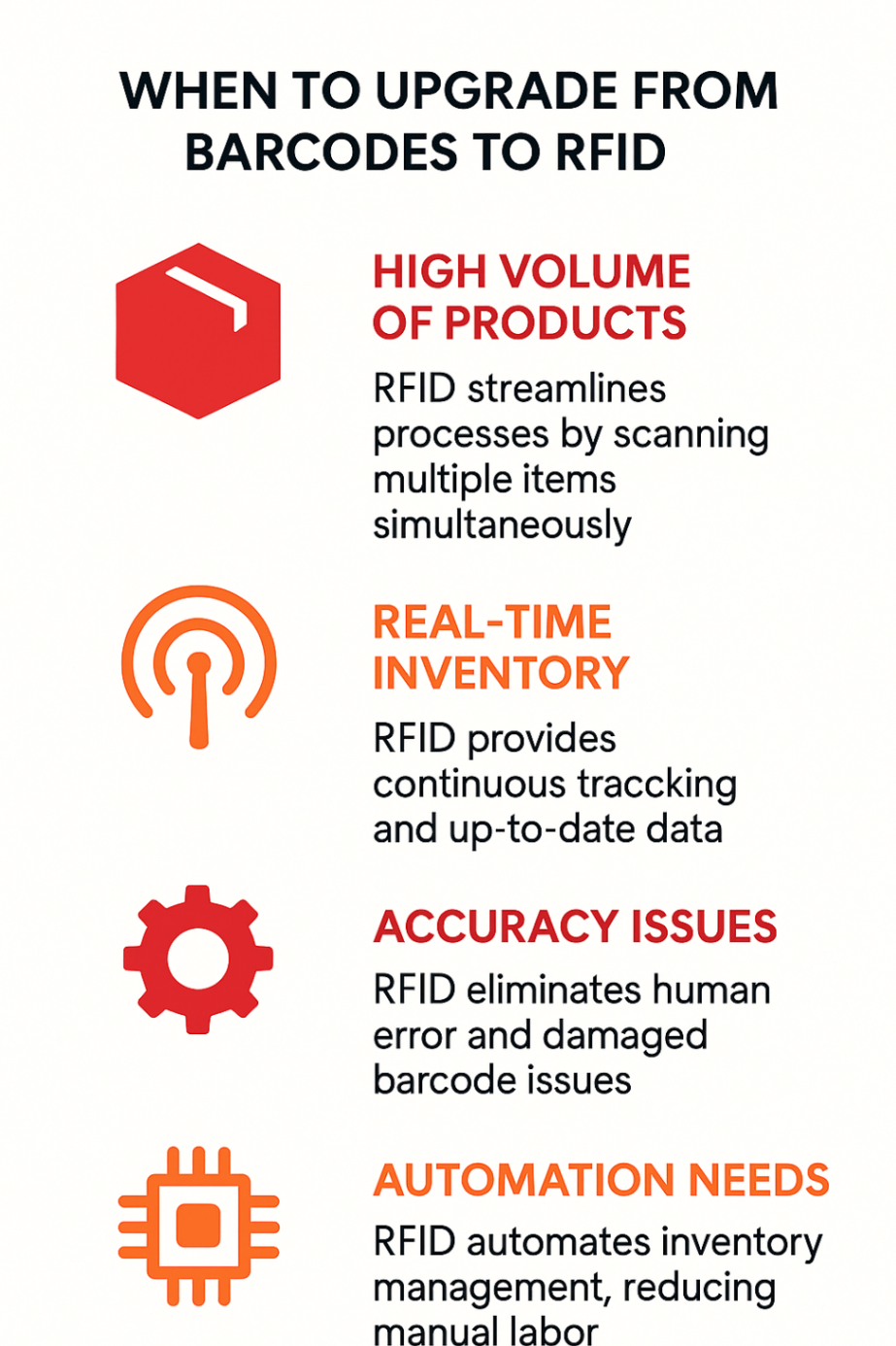
-
High Volume of Products: RFID streamlines processes by scanning multiple items simultaneously.
-
Real-Time Inventory: RFID provides continuous tracking and up-to-date data.
-
Accuracy Issues: RFID eliminates human error and damaged barcode issues.
-
Automation Needs: RFID automates inventory management, reducing manual labor.
-
Advanced Features: RFID provides enhanced tracking, asset management, and detailed product location information.
Printer Recommendations from OmegaBrand: Barcode vs RFID
At OmegaBrand, we offer a range of RFID printers designed to meet various needs, from high-volume industrial printing to compact desktop solutions. Below are some of our top recommendations for businesses looking to upgrade their label printing systems with RFID technology.
Printronix T830 UHF RFID 4-Inch 300 dpi 6 ips Desktop Thermal Label Printer w USB/LAN | T83R-100-1 | US Edition
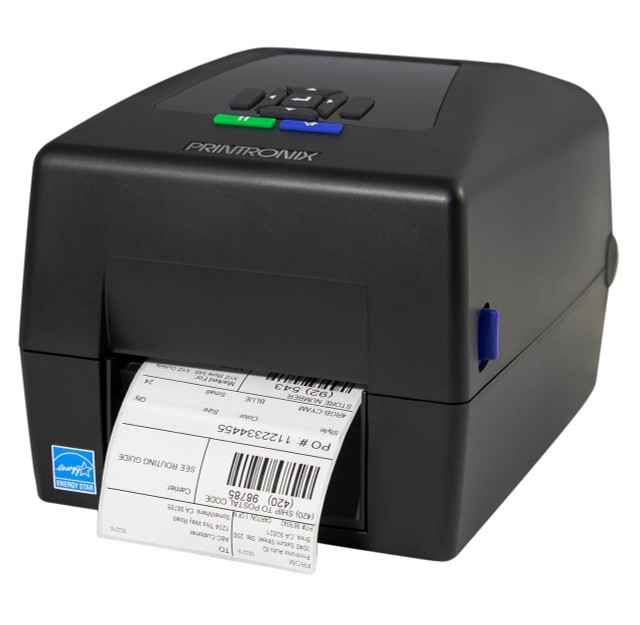
The Printronix T830 UHF RFID printer is ideal for businesses seeking a dependable desktop solution. With a print resolution of 300 dpi and speeds of up to 6 inches per second (ips), this printer provides high-quality label printing for tracking inventory and assets using RFID tags. Its USB and LAN connectivity options ensure seamless integration with your existing systems. This printer is ideal for small to medium-sized businesses that are looking to transition from barcodes to RFID.
Pros:
-
Compact Design: Ideal for small to medium businesses with limited space.
-
High Print Resolution: 300 dpi ensures high-quality labels.
-
Easy Integration: Supports both USB and LAN connectivity for seamless integration with existing systems.
-
Affordable: A more cost-effective option for businesses transitioning from barcodes to RFID.
Cons:
-
Lower Print Speed: Prints at 6 inches per second (ips), which may be slower for high-volume operations.
-
Limited Features: Lacks some advanced features found in industrial RFID printers.
Printronix T6304e 4" 300 dpi RFID Thermal Transfer Label Printer with USB/LAN | T6E3R4-1100-00
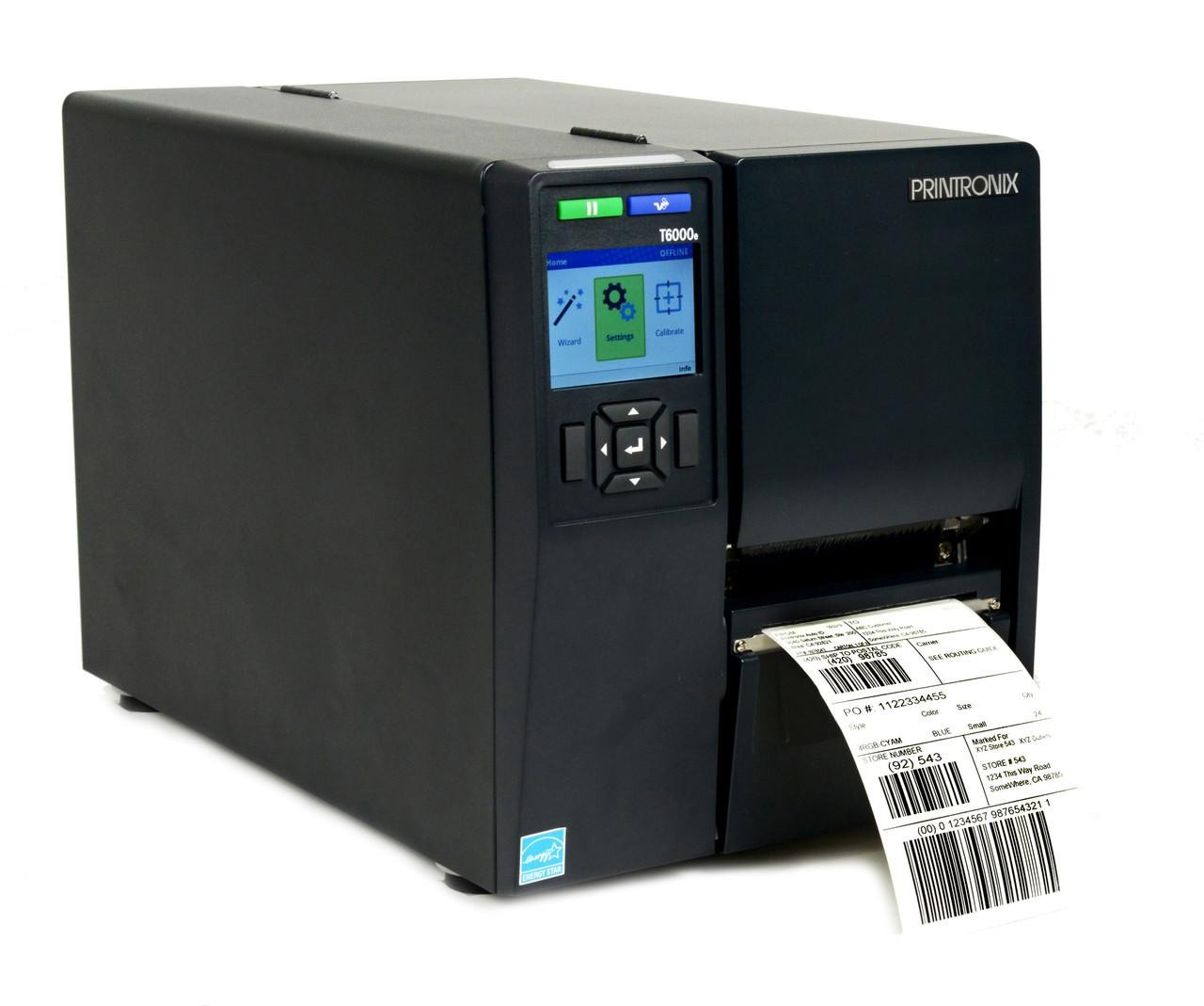
The Printronix T6304e is a versatile RFID thermal transfer printer that offers 300 dpi resolution and speeds of up to 12 inches per second. It features both USB and LAN connectivity, making it easy to integrate into your existing setup. This model is ideal for businesses seeking to transition from barcodes to RFID and streamline their inventory and asset management with high-performance printing capabilities.
Pros:
-
High Print Quality: 300 dpi ensures precise and clear prints.
-
Flexible Connectivity: Comes with USB and LAN connectivity options.
-
Faster Print Speed: Prints up to 12 ips, suitable for medium to large operations.
-
Easy Integration: Compatible with various business systems.
Cons:
-
Higher Price: More expensive than basic desktop RFID printers.
-
Bulkier Design: Takes up more space, making it less ideal for businesses with limited room.
Toshiba Tec BX410T 4", 305dpi, 14 ips Near Edge Thermal Transfer Label Printer with USB/LAN + RFID | BX410TTS02DS01RFID
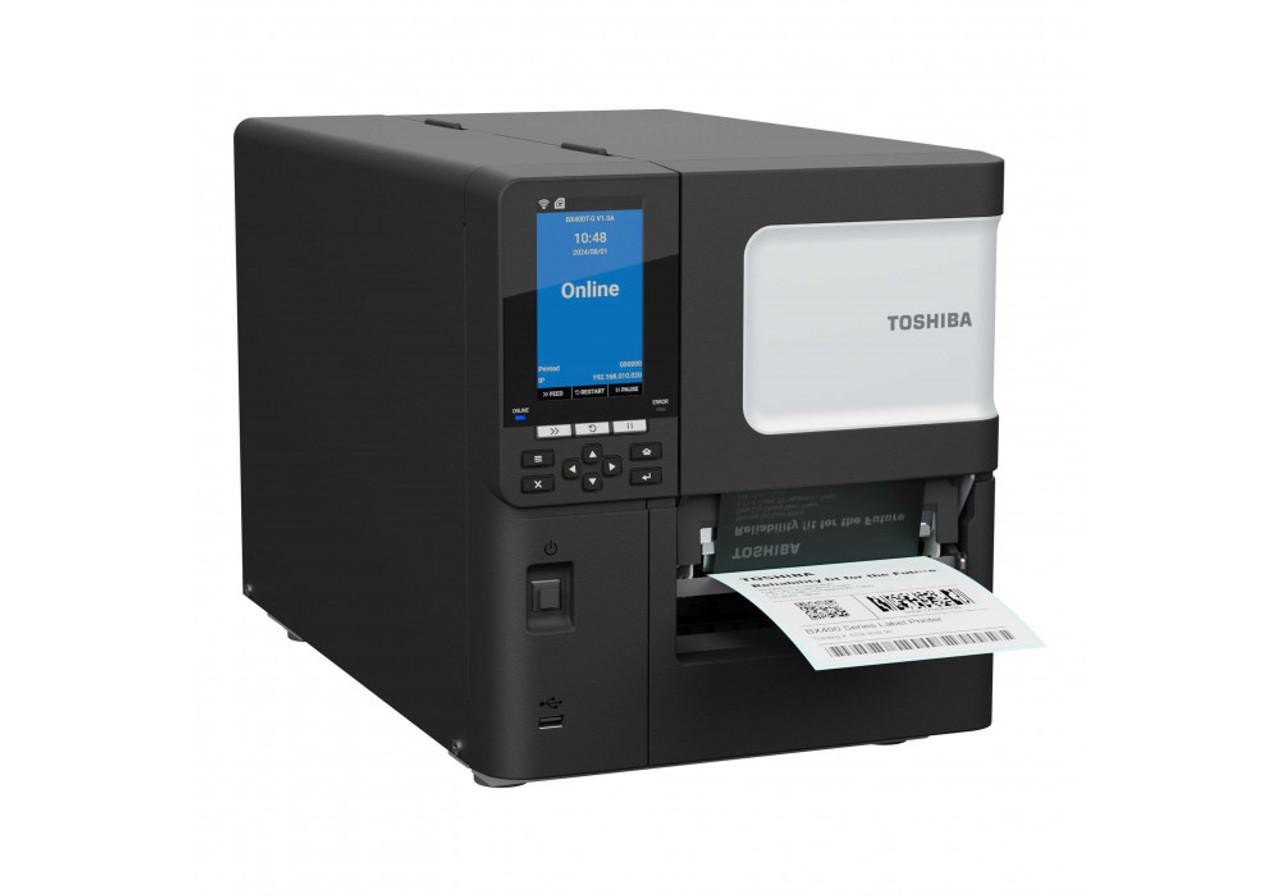
The Toshiba Tec BX410T is an advanced RFID thermal transfer printer featuring a high resolution of 305 dpi and rapid print speeds of up to 14 inches per second (ips). Ideal for large-scale operations that require quick, high-quality label printing, this printer features USB and LAN connectivity for easy integration. It’s an excellent choice for businesses looking to transition from barcodes to RFID for improved inventory management and tracking.
Pros:
-
Fast Printing: 14 ips speed makes it ideal for high-volume operations.
-
High Resolution: 305 dpi ensures sharp, accurate labels.
-
Durable and Reliable: Built for industrial use, providing high durability and performance.
-
Advanced RFID Support: Supports near-edge RFID tags for specialized applications.
Cons:
-
High Initial Cost: Higher price point due to advanced features.
-
Large Size: Its industrial design may not be suitable for smaller businesses with limited space.
SATO CL4NX Plus + 4"-Wide 203 dpi HF RFID & RTC Thermal Transfer Industrial Printer | WWCLP1801-NAR
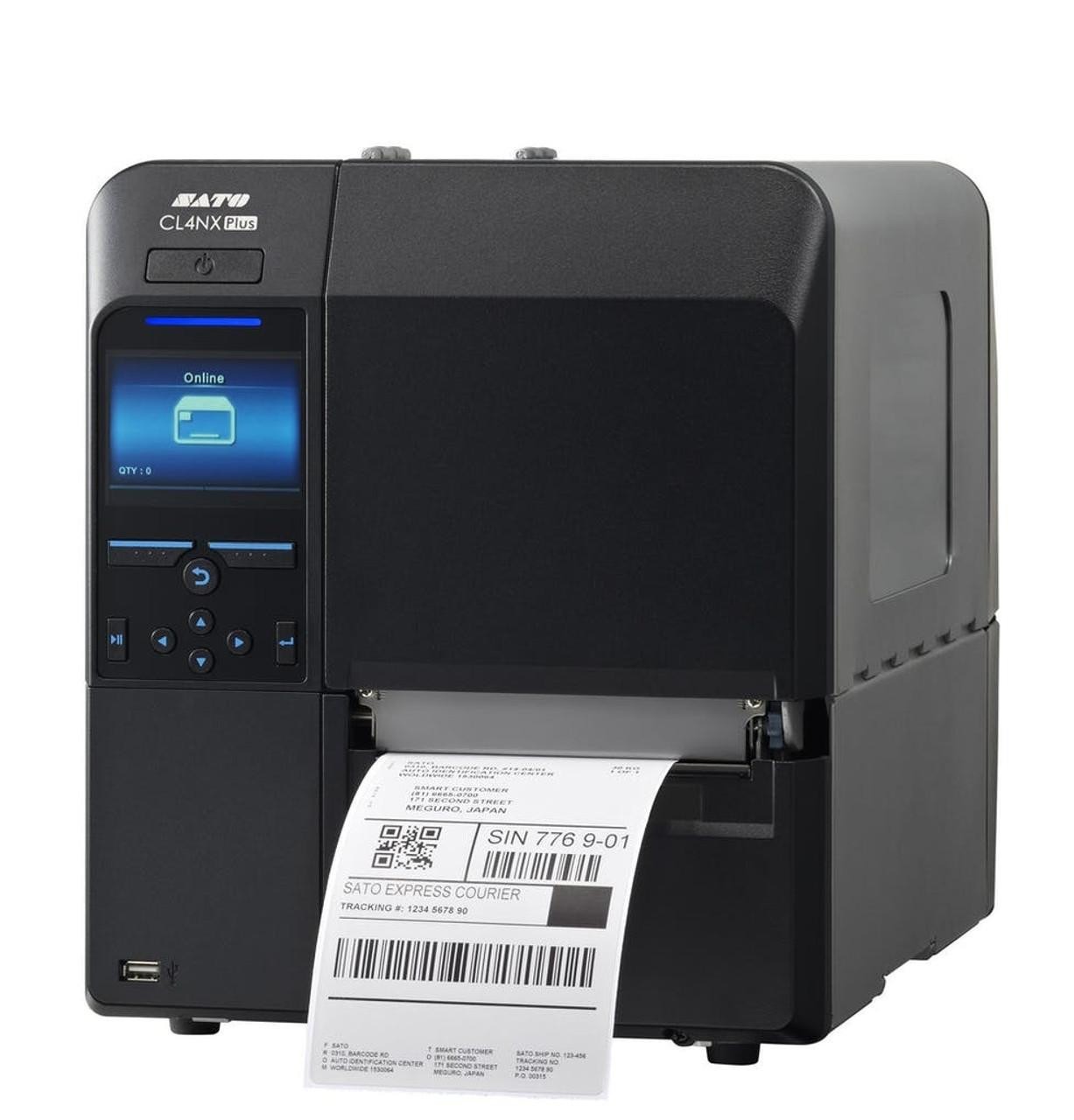
The SATO CL4NX Plus is a robust RFID industrial printer designed for high-volume printing. With a resolution of 203 dpi and support for HF RFID tags, this printer is ideal for businesses requiring industrial-grade performance. It’s suitable for industries that require continuous, reliable printing of RFID labels for asset tracking, supply chain management, and other applications.
Pros:
-
Industrial Grade: Built for high-volume and industrial applications.
-
HF RFID Technology: Suitable for businesses that require high-frequency RFID.
-
Reliable Performance: Excellent durability and consistent output.
-
Versatile: Supports various print widths and media types.
Cons:
-
Expensive: High initial investment makes it more suitable for large businesses.
-
Complex Setup: Requires more time to configure and integrate into systems.
Zebra ZD611R 2-Inch 203 dpi, 8 ips Thermal Transfer Label Printer RFID/USB/LAN/BTLE5 | ZD6A122-T01ER1EZ
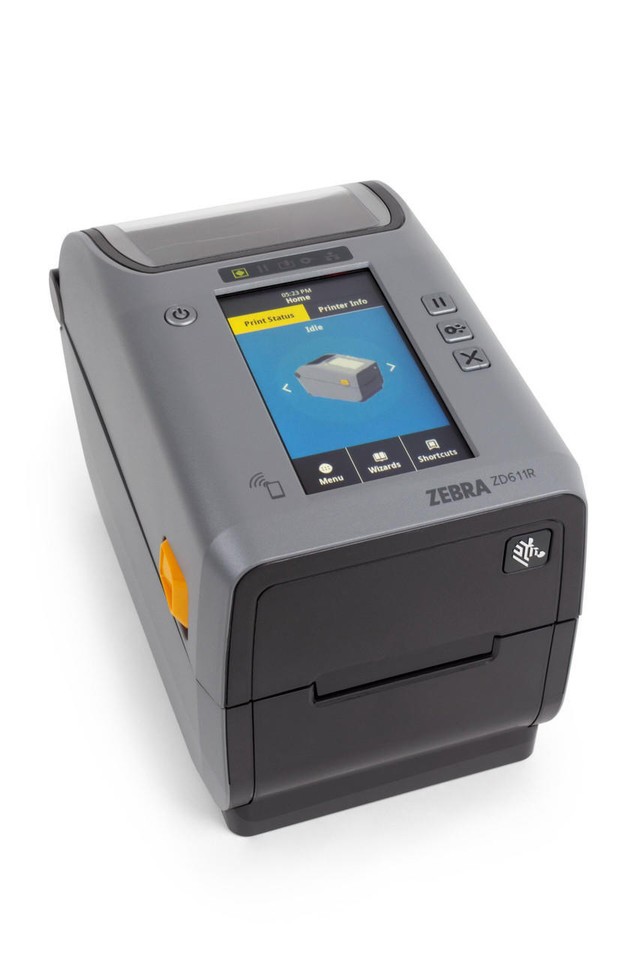
The Zebra ZD611R is a compact RFID label printer designed for smaller applications. With 203 dpi resolution and 8 ips print speed, it delivers high-quality RFID labels efficiently. This model supports both USB and LAN connectivity, making it easy to integrate into existing setups. It’s an excellent choice for businesses looking for an entry-level RFID printer to transition from barcodes to RFID.
Pros:
-
Compact and Affordable: Ideal for small businesses or limited spaces.
-
Fast Printing: 8 ips print speed is suitable for moderate-volume printing.
-
User-Friendly: Easy to set up and operate with USB and LAN connectivity.
-
Low Maintenance: Simple to maintain and use over time.
Cons:
-
Limited Print Width: A 2-inch print width may not be suitable for larger labels.
-
Basic Features: Lacks some advanced features compared to higher-end models.
Zebra ZT411R 4" Wide 203 dpi, 14 ips UHF RFID Thermal Transfer Label Printer USB/LAN/BT4 USA & Canada | ZT41142-T0100A0Z
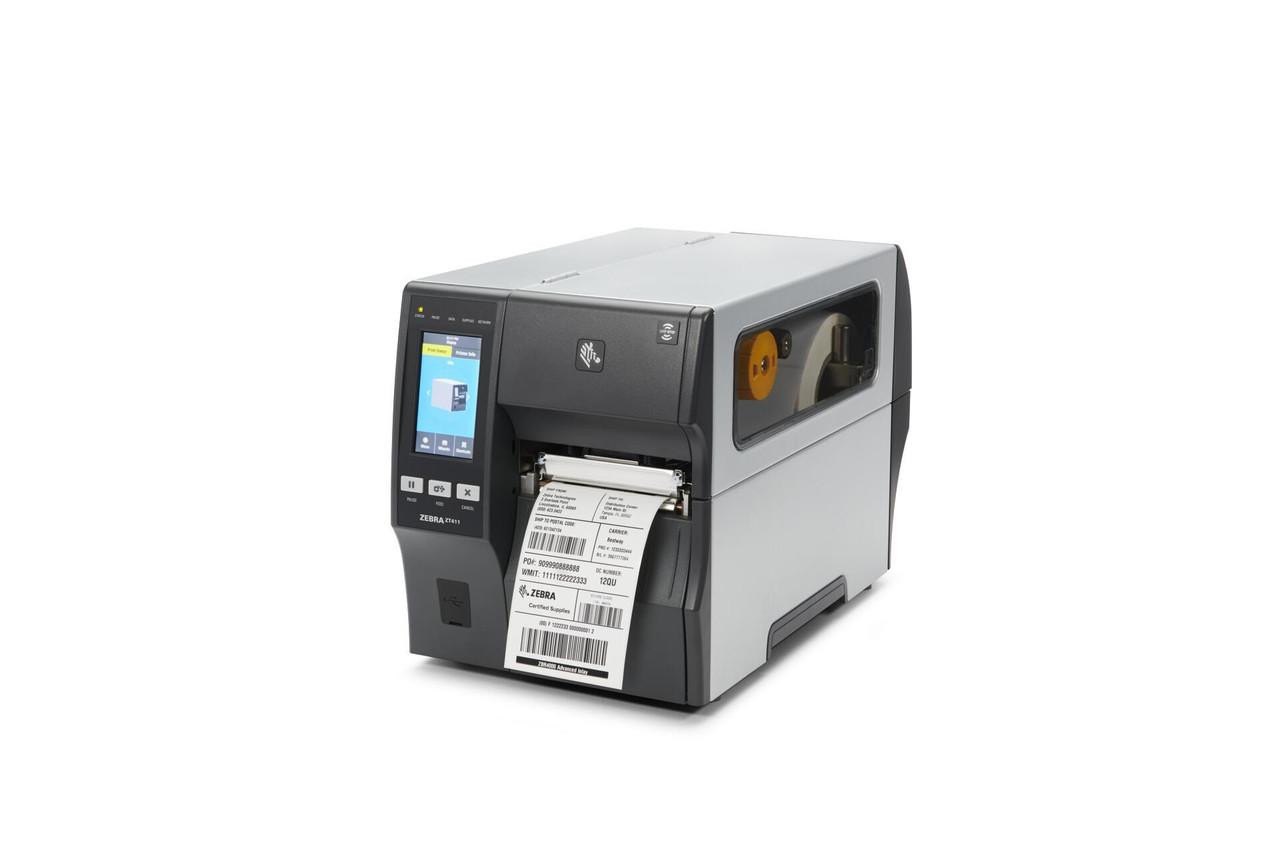
The Zebra ZT411R is a powerful RFID industrial label printer featuring a 203 dpi resolution and a print speed of 14 ips. This model supports UHF RFID technology and is designed for demanding environments where high-speed and high-quality label printing are essential. With both USB and LAN connectivity options, the ZT411R is ideal for businesses ready to scale their operations from barcodes to RFID.
Pros:
-
High-Speed Printing: 14 ips printing speed is ideal for high-volume environments.
-
UHF RFID Support: Perfect for businesses using UHF RFID tags for supply chain or asset management.
-
Durable Build: Designed for industrial environments with long-lasting performance.
-
Easy Connectivity: USB and LAN support for simple integration with business systems.
Cons:
-
Price: Higher price point due to its industrial capabilities and features.
-
Complex for Small Businesses: Overkill for small operations with low-volume printing needs.
Transform Your Business with OmegaBrand’s RFID Solutions
Unlock the power of RFID technology and take your business operations to the next level with OmegaBrand's premium RFID printers. Whether you're transitioning from barcodes to RFID or scaling up your inventory management system, we offer the tools you need to automate, optimize, and accelerate your processes. Our high-performance RFID printers deliver exceptional speed, accuracy, and real-time tracking, giving you a competitive edge in any industry. Explore our RFID Printers Now and revolutionize your business today!
Conclusion
Choosing the right technology for your business depends on your specific needs. Barcodes vs RFID offers distinct advantages: barcodes are cost-effective and simple, while RFID provides speed, automation, and real-time tracking for larger-scale operations. By considering your industry, budget, and scalability, you can make an informed decision to enhance efficiency and accuracy.
Frequently Asked Questions:
Is RFID always better than barcodes for inventory management?
No, the choice between RFID and barcode depends on the business's specific needs. RFID provides real-time tracking and enables faster scanning of multiple items, even without a line of sight. However, barcoding is more cost-effective for smaller operations. RFID scanners and sensors are better suited for extensive inventories, while barcode readers work well in smaller setups, such as grocery stores.
Can small businesses afford to implement RFID systems?
Small businesses can adopt RFID systems, but they must carefully consider the type of tag and the necessary infrastructure. RFID systems are more expensive due to the costs of RFID readers, scanners, and data transmission. However, with scalable solutions, small businesses can benefit in the long run, particularly in terms of inventory management.
How secure are RFID tags compared to barcodes?
RFID tags are generally more secure than barcodes because they transmit encrypted RFID signals. Barcodes can be easily scanned with a beam of light and are easily duplicated. RFID data is often protected, reducing the risk of unauthorized access or fraud in high-security environments.
Will RFID replace barcodes in the near future?
While RFID offers many advantages, barcodes remain widely used due to their simplicity and cost-effectiveness. The main differences between RFID and barcode lie in speed and scalability. RFID may dominate larger-scale operations, but barcoding will still be relevant in small businesses and environments where individual items don’t need frequent tracking.

